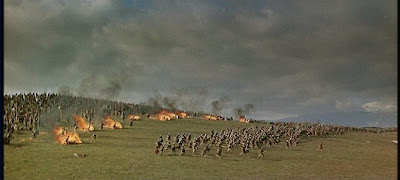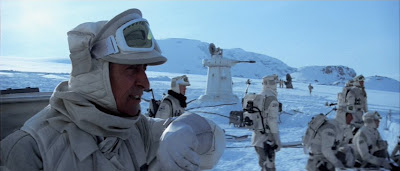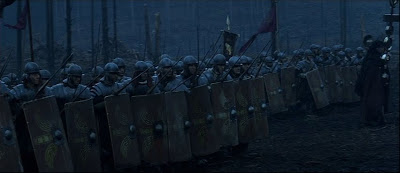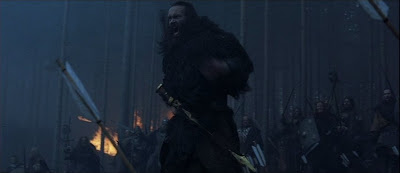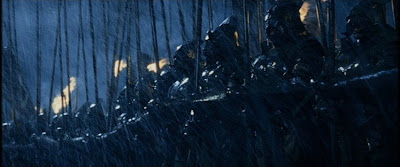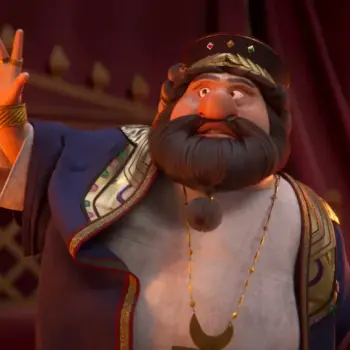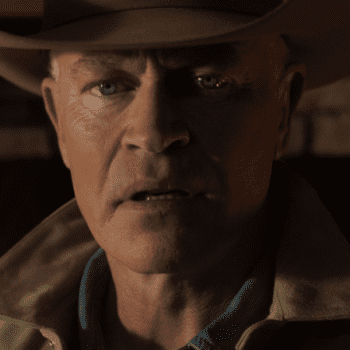One of the many interesting things about James Cameron’s Avatar is how utterly and completely it implicates the human race — and thus its own audience — in the atrocities that certain human characters commit against the N’avi, the humanoid species that lives on the alien moon of Pandora.
The evils of humanity are made pretty explicit in the script and in the performances, of course. But film is primarily a visual medium, and it is quite telling that, on at least two separate occasions, as violence is about to break out between the humans and the Na’vi, Cameron puts the humans on the left side of the screen and the Na’vi on the right side of the screen.
This is significant because, in our culture at least, we read from the left to the right, so we identify primarily with the left side of screen and then move towards the right. Somebody who moves to the right moves with us, while someone who moves to the left moves towards us.
Thus, in most movies, the vast majority of epic battle scenes begin with “our” side moving from left to right while “their” side moves in the opposite direction. Once the armies have clashed, of course, all bets are off, as soldiers from both sides move in all sorts of directions — but this is generally how the battle scenes begin. So it is interesting to see Cameron reverse this approach.
The trailer itself contains a few of these shots. First, the humans:
And then, the Na’vi:
Compare this to the more conventional compositions in other films produced over the last several decades:
Spartacus (1960) — Slaves on the left, Romans on the right:
Lawrence of Arabia (1962) — Arabs on the left, Turks on the right:
The Empire Strikes Back (1980) — Rebels on the left, the Empire on the right:
Gladiator (2000) — Romans on the left, Huns on the right:
The Lord of the Rings: The Two Towers (2002) — Humans, hobbits and elves on the left, orcs on the right:
The Chronicles of Narnia: The Lion, the Witch and the Wardrobe (2005) — Good Narnians on the left, bad Narnians on the right:


